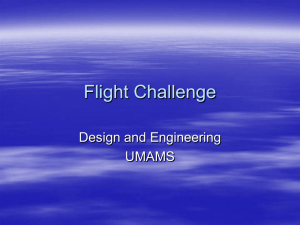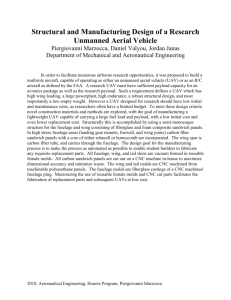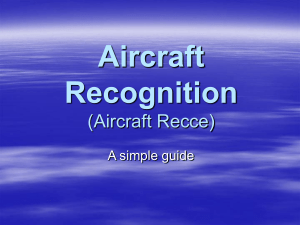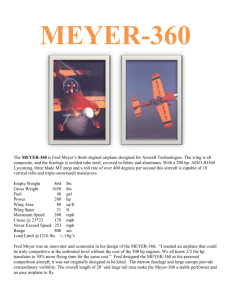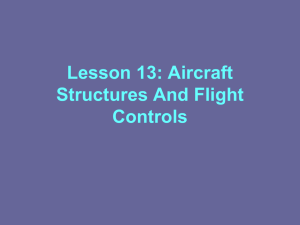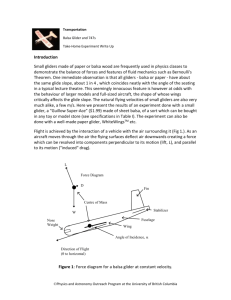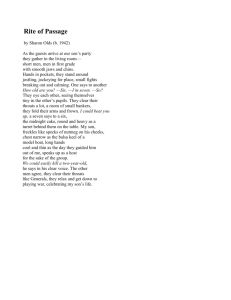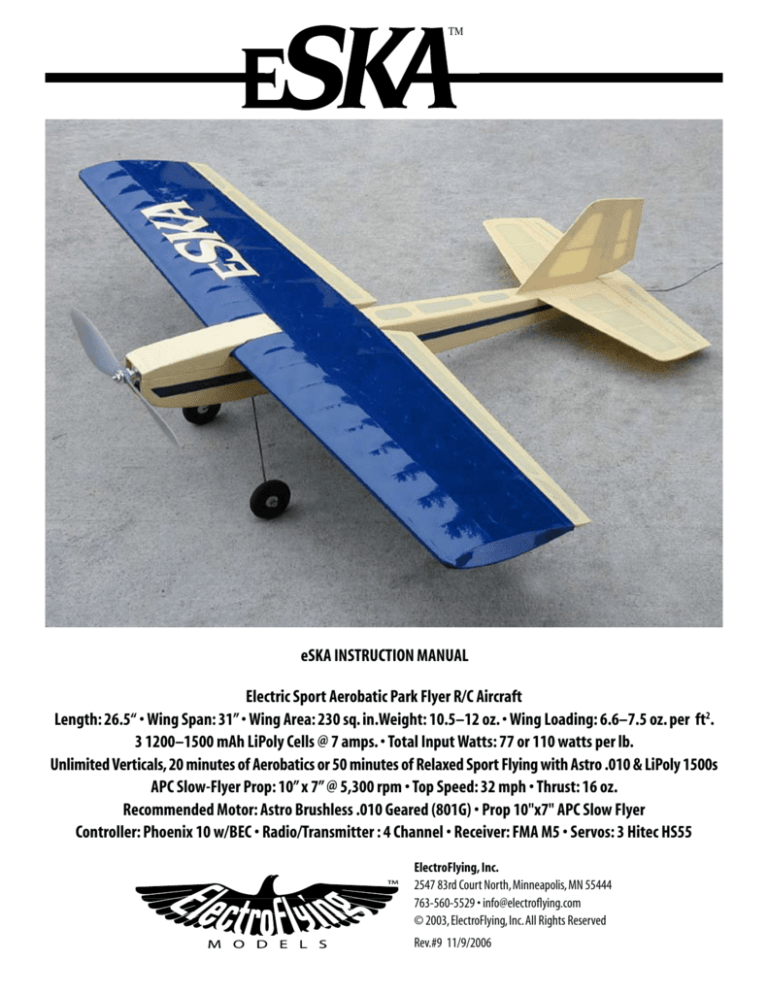
TM
eSKA INSTRUCTION MANUAL
Electric Sport Aerobatic Park Flyer R/C Aircraft
Length: 26.5“ • Wing Span: 31” • Wing Area: 230 sq. in.Weight: 10.5–12 oz. • Wing Loading: 6.6–7.5 oz. per ft2.
3 1200–1500 mAh LiPoly Cells @ 7 amps. • Total Input Watts: 77 or 110 watts per lb.
Unlimited Verticals, 20 minutes of Aerobatics or 50 minutes of Relaxed Sport Flying with Astro .010 & LiPoly 1500s
APC Slow-Flyer Prop: 10” x 7” @ 5,300 rpm • Top Speed: 32 mph • Thrust: 16 oz.
Recommended Motor: Astro Brushless .010 Geared (801G) • Prop 10"x7" APC Slow Flyer
Controller: Phoenix 10 w/BEC • Radio/Transmitter : 4 Channel • Receiver: FMA M5 • Servos: 3 Hitec HS55
ElectroFlying, Inc.
2547 83rd Court North, Minneapolis, MN 55444
763-560-5529 • info@electroflying.com
© 2003, ElectroFlying, Inc. All Rights Reserved
Rev.#9 11/9/2006
eSKA - INTRODUCTION
M
O
Read through this manual before starting construction. It contains important
instructions and warnings concerning the assembly and use of this model.
The eSKA Design
e-SKA (electric Simple Kit Airplane - pronounced EeSKA) is an original kit
designed for modelers with an interest in electric powered airplanes capable
of park flying and sport aerobatics. eSKA was designed from the beginning for
a light-weight brushless motors and LiPoly cells. This airplane makes use of
strong, lightweight design and construction which improves electric powered
flight performance and duration. Using the suggested motor and cells, eSKA
will have unlimited vertical performance. eSKA was designed to fly a wide
range of aerobatics from very tight maneuvers to large, powerful loops, slow
rolls, snaps and big stall turns. eSKA's light weight and thin, semi-symmetrical,
progressive airfoil allows for a wide speed range. eSKA is controllable and flies
smoothly even in high winds, yet will slow down and land like a feather. eSKA
is a great flying electric powered model that flies predictably, not your typical
"flip-&-flop" park flyer. eSKA should not be flown by a beginner R/C pilot.
eSKA was designed to make motor battery changes as easy as possible, with no
tools required. You don't have to turn the airplane over or remove the wing to
change batteries. The recommended motor for eSKA is the Astro brushless .010
geared motor powered by 3S - 1200mAh LiPoly cells at 7 amps. This combination give spectacular performance and long flight times. eSKA is light yet tough
and its’ pop-off battery hatch and sliding wing help reduce damage from less
than perfect landings. eSKA is a simple-to-build, fly-anywhere airplane that
is just plain fun to fly. This kit features leading edge design and interlocking
laser cut parts for exceptional fit, quality and ease of construction, however,
you should have some kit building experience or help from an experienced kit
builder when building this kit. The eSKA Plans were drawn with the aid of a
computer using professional design software. We believe that the eSKA Plans
are a work of art and set a new standard in kit manufacturing.
We would not be surprised, if eSKA is the most enjoyable building and flying
park flyer that you have owned. Your next favorite airplane kit…eSKA!
WARNING!
This is not a beginner's airplane. This R/C kit and the model you will build
from it is not a toy! It is capable of serious bodily harm and property damage.
It is your responsibility, and yours alone, to build this kit correctly, properly
install all R/C components and flying gear (motor, batteries, speed control,
radio, servos, pushrods, etc.) and to test the model and fly it only with experienced competent help, using common sense and in accordance with all safety
standards as set forth in the Academy of Model Aeronautics (AMA) Safety
Code. It is suggested that you join the AMA and become properly insured
before attempting to fly this model.
Warranty
ElectroFlying, Inc. guarantees this kit to be free from defects in both materials
and workmanship at the date of purchase. This warranty does not cover any
components damaged by use or modification. In no case shall ElectroFlyings'
D
E
L
S
liability exceed the original cost of the purchased kit. Further, ElectroFlying
reserves the right to change or modify this warranty without notice.
ElectroFlying has no control over the final assembly or material used for final
assembly, therefore no liability shall be assumed nor accepted for any damage resulting from the use by the user of the final user-assembled aircraft
kit. By the act of using the user-assembled aircraft kit, the user accepts all
resulting liability.
If the buyer is not prepared to accept the liability associated with the use of
this aircraft kit, the buyer is advised to return this kit immediately in new and
unused condition to ElectroFlying, Inc.
Follow these important safety precautions:
1. This kit should not be considered a toy, but rather a sophisticated, working
model that functions very much like a full-size airplane. Because of its performance capabilities, it could cause injury to yourself and spectators or damage
to property, if it is not assembled and operated correctly.
2. You must assemble the model according to the instructions. Do not alter or
modify the model, as doing so may result in an unsafe or un-flyable model.
3. You must take time to build straight and strong. You should not use any
materials or kit supplied parts that you suspect are defective or damaged.
Request replacement kit parts from ElectroFlying, Inc.
4. You should only use R/C radio systems that are in perfect working order.
5. You must check the operation of the model before every flight to ensure
that all equipment is operating and that the model has remained structurally
sound. Replace any part that shows any sign of wear or fatigue.
6. Check control surface travel and direction before each flight.
7. Do a radio range check before the first flight or after any change to the
model's radio system. Never use a radio system that has been involved in a
crash without a professional check-out and repair if needed.
8. Do not over-power this kit. Use only recommended electric motors and cells.
9. If you are not already an experienced R/C pilot, you should fly the model
only with the help of a competent, experienced R/C pilot.
10. While this airplane kit has been flight tested to exceed normal use, the
airplane should not be used for high stress flying, such as racing.
We, as the kit manufacturer, provide you with a top quality kit and instructions,
but ultimately the quality and flyability of your finished model depends on how
you build it; therefore, we cannot in any way guarantee the performance of
your completed model, and no representations are expressed or implied as to
the performance or safety of your completed model.
Abbreviations
Fuse = Fuselage
Fin = Vertical Stabilizer or Fin
LE = Leading Edge
" = Inches
Stab = Horizontal Stabilizer
LG = Landing Gear
TE = Trailing Edge
Lite-Ply = Light Weight Plywood
eSKA - INTRODUCTION
M
O
Before You Start
Compare the parts in this kit with the parts list on page 3, and note any missing parts. Also inspect all parts to make sure they are of acceptable quality.
If any part is missing, broken or poor quality, or if you have any questions
about building or flying this airplane, please call us at 763-560-5529, or email
us at info@electroflying.com. If you are contacting us for replacement parts,
please include the kit name, part name, part code/number and your mailing
address. You can also check our web site at www.electroflying.com for the
latest updates.
Radio Equipment
The ElectroFlying eSKA can use any standard 4 channel narrow-band receiver,
but to save a little weight you may want to use one of the smaller receivers
such as the Hitec 555 (Without case) or FMA M5. eSKA has been design to use
2–3 Hitec HS-55 servos and BEC.
Motor and Batteries
eSKA has been designed to use either an Astro Brushless .010 geared motor.
The Astro Brushless motor should be used with 3S - 1200mAh LiPoly cells. The
Astro .010 motor mount is included in the kit. The optional motor mounts for
other brushless motors can be requested at no charge.
D
E
L
S
(1) 3/16" x 11/16" Birch Dowels (Wing Mounting Dowel)
(2) 1/8"x 1/4"x 18" Balsa Stick (Wing Trailing Edges)
(2) 1/4" x 3/8" x 18" Balsa Stick (Wing Leading Edges)
(2) 1/8" x 3/8" x 18" Balsa Stick (Top Wing Spar)
(1) 1/16" x 1/4" x 12" Balsa Stick (Aileron Braces/Ribs)
(1) 1/8" sq. x 18" Balsa Stick (Tail Surface Braces/Ribs & LG Brace)
Hardware
(4) Small Rubber Bands (Hatch Hold Down)
(4) Du-BroMicro E/Z Links
(4) Du-Bro Mini E/Z Connector Sets
(4) Du-Bro .032 Micro Pushrod System Wires
(1) 5/64"x 14" Music Wire (Landing Gear Legs)
(2) 1-1/2" Du-Bro Light Weight Foam Wheels
(2) 3/32" Du-Bro Wheel Collars and Set Screws
(4) #2 x 3/8" Button Head Sheet Metal Screws (Du-Bro 526)
(1) 3" x 3/4" Adhesive Back Velcro Strip (Hook and Loop Set)
Additional Items Required to Complete eSKA
Propeller - APC Slow Flyer 10" x 7" (Astro Brushless .010)
1 Roll of Light Weight Iron-On Plastic Covering (Nelson LiteFILM
or Ultra Coat Lite Film)
Clear Packing Tape for Hinges
Supplied Parts List (Or What's In The Box)
Use the check-list below to make sure you have everything before you
start. If you are missing any parts, contact us at 763-560-5529 or at
info@electroflying.com.
General
(1) This Manual (20 Pages, Illustrated)
(1) Plan Sheets Rolled (24" x 36")
Wood (Balsa, Birch & Lite-Ply)
(1) Laser Cut 1/32" Plywood Sheet V1S1 (Doublers & Control Horns)
(1) Laser Cut 1/16" Balsa Sheet V1S2 (Wing Ribs 2, 3, 4, 5, TE & Fuse Top)
(1) Laser Cut 1/16" Balsa Sheet V1S3 (Wing Ribs 2, 3, 4, 5, 6, 7, 8, 9 & 10)
(1) Laser Cut 1/16" Balsa Sheet V1S4 (Fuse Bottom & LGM2)
(1) Laser Cut 1/16" Balsa Sheet V1S5 (Fuse Bottom Sheeting)
(1) Laser Cut 3/32" Balsa Sheet V1S6 (Fuse & Hatch Right Side)
(1) Laser Cut 3/32" Balsa Sheet V1S7 (Fuse & Hatch Left Side)
(1) Laser Cut 1/8" Balsa Sheet V1S8 (Fin, Rudder & Elevator)
(1) Laser Cut 1/8" Balsa Sheet V1S9 (Wing Spar & Horizontal Stabilizer)
(1) Laser Cut 1/8" Balsa Sheet V1S10 (Stab, Fin, TE Joiner & LG Cover)
(1) Laser Cut 1/8" Lite-Ply Sheet V1S11 (Fuselage Formers, Motor Mount,
Wing Spar Joiners, Landing Gear Mount, Wing Hooks & Servo Mounts)
(1) Laser Cut 3/32" Balsa Sheet V1S12 (Ribs 1, 11 & Wing Tips)
(1) Laser Cut 3/32" Balsa Sheet V2S13 (Left Aileron)
(1) Laser Cut 3/32" Balsa Sheet V2S14 (Right Aileron)
Building Supplies/Adhesives
1 oz. Thin C/A and 1 oz. Thick C/A
C/A Accelerator (Optional)
120, 220 and 400 Grit Sanding Paper
Waxed Paper
Thread Locker
Lite Hobby Filler
Building Tools
Flat level building surface (2' x 4' Ceiling Tile)
Hobby Knife and #11 Blades
Small T-Pins
.050 Hex Ball Wrench
Electric Drill, 1/16" and 3/16" Drill Bits
Small and Medium Flat Blade Screw Drivers
Small and Medium Phillips Screw Drivers
Pliers or Vice Grips and Various Small Clamps
Various Size Sanding Blocks
Covering Iron and Sock
24" Straightedge/Ruler
Cutting Mat
Masking Tape and/or Small Rubber Bands
Rotary Tool and Reinforced Cut-off Wheel
eSKA - INSTRUCTIONS
M
O
D
E
L
S
Building Notes
Whenever you see the term GLUE written in the instructions, you should use a quality hobby grade Thin CA type glue.
Photos and drawings in the instructions are placed to the left of the steps they refer to. It may be helpful to look ahead in the instructions or refer to the Plan callouts if you are confused about the current step or photo. Part numbers on laser cut parts are top-side-up, unless otherwise noted.
Most of the wood parts in this kit have been laser cut for accuracy and quality. The parts are held in place in each sheet by small tabs or breaks in the laser cut. If
you have trouble removing the parts from the sheets without damage, you can use a hobby knife to cut the tabs. Take your time and inspect all the parts after
you have them removed. Save the wood scraps until you have finished the kit. Very light sanding of the parts can remove any tab bumps, but this should be
unnecessary for the most part.
The wood will have a light brown edge from the laser that will not have any effect on building strength. You may want to sand the brown edge of parts that will
be visible when using transparent coverings. Be careful not to over-sand the soft balsa wood and change the shape or size.
Take your time and enjoy building your eSKA. Building from a kit can be a satisfying part of this sport and can add to your skills as an R/C pilot. You will have a better understanding of your airplane because unlike an ARF, you will get to know every part and function as you build. eSKA has been designed to build quickly and
with eSKA's laser cut parts, building accuracy is easier to achieve. Building your own R/C airplane from a kit can be one of the most rewarding experiences in this
sport. The following instructions will lead you through the building process, so clean off the building board and get started building your eSKA.
Tail Group Construction
Start the Horizontal Stabilizer and Elevator construction by
covering the Plan with wax paper to protect the Plan and keep the
parts from sticking to it. The Stabilizer and Elevator are constructed
from 1/8" balsa stock.
2 Position and pin laser cut Balsa pieces HS1 through HS5
over Plans. Use a straightedge to keep the TE of the Stab straight.
Note: You should build the Stabilizer bottom side up with the part
labels up as shown here. The Rudder Push Rod Slot will be on the
opposite side from the Top View shown on the Plans.
3 Glue all Joints.
4 Position Elevator near TE of the Stabilizer.
5 Cut and glue 1/8" sq. Balsa Sticks between LE and TE of
Stabilizer and Elevator as shown on plans.
eSKA - INSTRUCTIONS
M
O
D
E
L
S
6 Start the Vertical Fin and Rudder construction by covering
the Plan with wax paper to protect the Plan and keep the parts
from sticking to it. The Vertical Fin and Rudder are constructed from
1/8" Balsa stock.
7 Position and pin laser cut Balsa pieces F1 through F4 over
Plans and CA in place.
8 If you will not be using a Rudder control, glue the Rudder to
the TE of the Fin.
09 Cut and glue 1/8" sq. Balsa Sticks between LE and TE of Fin
and Rudder.
10 Sand Stabilizer, Elevator, Fin and Rudder flat. Round LE of
Fin and top of Rudder. Round LE of Stabilizer.
11 Taper TE of Rudder and Elevator to match the profile on the
plans. The Rudder and Elevator should be 1/16" Thick at the Trailing
Edge.
12 Bevel the LE of the Elevator as shown on plans.
13 If you plan to use a Rudder Servo, bevel the LE of the Rudder as shown on the plans.
Note: Your finished Fin, Rudder, Stabilizer and Elevator should look
like this when your done. They should weigh less than 0.5 oz. after
sanding. You can harden all the Balsa corners with Thin CA for a little
more durability.
Wing Construction
14 Start the wing construction by covering the Wing Plan with
wax paper to keep the wing from sticking to it.The Wing is built topside-up over the plans.
Note: You will build the Left Wing Panel first. The Left Wing Panel
is lifted 1/2" at Rib 11 for the correct dihedral, then the Right Wing
Panel is built onto the Left Wing Panel.
15 Locate the wing pieces and lay them out in order so you
don't assemble them in the wrong order. Be careful, there is only a
small difference between each Wing Rib. Rib labels should be topside-up when they are glued to the Wing Spar. Check and doublecheck before you glue each Rib in place, you don’t want to have to
build another wing.
eSKA - INSTRUCTIONS
M
O
D
E
L
S
16 While holding the laser cut 1/8" Balsa Wing Spar (WS)
and 1/8" Lite-Ply Rear Spar Joiner (RSJ) together, slide the laser cut
1/16" Balsa Rib 1 (R1) into slot. Glue Joiner to Spar with Thin C/A.
17 Glue laser cut 1/16" Balsa Left Bottom Trailing Edge (LBTE)
to a 1/8"x 1/4"x 15-1/4" Balsa Trailing Edge. Use a straightedge to
keep TE straight. Refer to plans for alignment.
18 Position Wing Spar, Joiner and Rib 1 over plans and pin in
place. Position Trailing Edge assembly over plans Align the root end
with the center of the Wing.
19 Position Trailing Edge over Plans. Ribs fit in notch of LBTE
and against the vertical edge of the Trailing Edge. Glue the rear of
Rib 1 to the Trailing Edge.
20 Glue the laser cut 3/32" Balsa Rib 11 (R11) and Wing Tip
(WT) to end of Spar. Align Rib 11 and TE with Plan and pin in place.
21 Slide the laser cut 1/16" Balsa Full Ribs 3, 5, 7 and 9 (R3, R5,
R7 & R9) into slots on Spar. Glue Ribs to the TE, BUT NOT the Spar.
22 Glue the 1/4"x 3/8"x 15" Balsa Leading Edge to front of Rib
1 and Rib 11. Adjust the other Ribs so they line-up with the Leading
Edge and glue in place at the leading edge and at the Spar.
23 Slide the laser cut 1/16" Balsa Sub Ribs 2, 4, 6, 8 & 10 (R2,
R4, R6, R8 & R10) into place on Spar and line-up front tips with the
Leading Edge. Glue Sub Ribs to Spar and LE.
24 Position 1/8"x 3/8"x 15-1/4" Balsa Top Wing Spar in Rib
slots. Align root end with Wing center. Glue in place. Trim excess off
at Rib 11.
25 Remove pins near Wing Tip and tip Wing up. Place a 1/2"
spacer between building board and Wing at Rib 11.This will set the
correct dihedral as you build the Right wing half onto the completed
Left Wing half.
26 Locate the laser cut 1/16" Balsa Right Bottom Trailing Edge
(RBTE) and 1/8"x 1/4"x 15-1/4" Balsa Trailing Edge. Make up the
other Trailing Edge assembly as before.
27 Position Trailing Edge over Plans and pin in place. Glue
the two TE root ends together.
eSKA - INSTRUCTIONS
M
O
D
E
L
S
28 Position the laser cut 1/8" Balsa Wing Spar, 1/8" Lite-Ply
Wing Joiner and 1/16" Balsa Rib 1 over plans.
29 Glue the rear of Rib 1 to the Trailing Edge.
30 Glue the laser cut 3/32" Balsa Rib 11 (R11) and Wing Tip
(WT) to end of Spar. Align Rib 11 and TE with Plan and pin in place.
31 Slide the laser cut 1/16" Balsa Full Ribs 3, 5, 7 and 9 (R3, R5,
R7 & R9) into slots on Spar. Glue Ribs to the TE, BUT NOT the Spar.
32 Glue the 1/4"x 3/8"x 15" Balsa Leading Edge to front of Rib
1 and Rib 11. Adjust the other Ribs so they line-up with the Leading
Edge and glue in place at the leading edge and at the Spar.
33 Slide the laser cut 1/16" Balsa Sub Ribs 2, 4, 6, 8 & 10 (R2,
R4, R6, R8 & R10) into place on Spar and line-up front tips with the
Leading Edge. Glue Sub Ribs to Spar and LE.
34 Position 1/8"x 3/8"x 15-1/4" Balsa Top Wing Spar in Rib
slots. Align root end with Wing center. Glue in place. Trim excess off
at Rib 11.
35 Carefully remove Wing from plan. Use thick C/A to build up
a fillet where each Rib contacts the Leading Edge.
36 Glue laser cut 1/16" Balsa Rib Braces (RB) between Rib 1
and Bottom Trailing Edge.
37 Glue 1/8" Lite-Ply Front Spar Joiner (FSJ) to the front center
of the main Wing Spar. Part letters should face up. You may have to
sand the part lenght to fit between Ribs.
38 Glue laser cut 1/8" Lite-Ply Wing Servo Mount (WSM) in
notches of both Rib 1s. Then glue laser cut 1/32" Plywood Wing
Servo Mount Doubler (WSMD) to the bottom rear of Wing Servo
Mount.
39 Sand Spar, LE and TE flush with Ribs and Wing Tips.
40 Sand the Leading Edge to match the Airfoil shape. Refer to
the Rib detail in the upper right corner of the plans.
eSKA - INSTRUCTIONS
M
O
D
E
L
S
41 Locate the laser cut 3/32" Balsa Ailerons, Aileron Spars
and Aileron Ribs. Glue Aileron Spar To Each Aileron. Glue Aileron
Ribs AR2 through AR9 in notches of Ailerons. Note: Each Aileron is
marked with either an "L" for Left or "R" for Right. This marking is
on the bottom of each Aileron. Ailerons are built bottom-side-up.
42 Trim end of Aileron Spars and glue Aileron Rib 1 and 10 in
place at each end of Aileron.
43 Sand Ribs flush with Aileron Spar. You should also sand the
Trailing Edge of the Ribs and Ailerons down to 1/16" at the trailing
edge. Bevel the bottom edge of each Aileron as shown on the plans.
Use sanding block and work carefully. You should bevel the edge 40º
to allow for full down Aileron travel.
Note: The Wing and Ailerons should weigh about 1.5 ozs.at this
time. Set Wing and Ailerons aside for later.
Fuselage Construction
44 Cover the Fuselage area of the plans with wax paper.
45 Locate the laser cut 3/32" Fuselage Sides (FSL & FSR) and
place the bottom edges together over the plans. Each Fuselage Side
is marked with the words Left or Right near the front along the top
edge. Left and Right are from the pilot position looking forward.
46 Glue the laser cut 1/32" Plywood Fuselage Doublers (FDL &
FDR) to the inside of each Fuselage Side. FDL should be used on the
Left Fuselage Side and FDR should be used on the Right Fuselage
Side. They are different because of the 1º of right thrust.
Tip: You can use the Motor Mount (AMM), Fuselage Former (FF1)
and Landing Gear Mount (LGM1) to help align each Doubler/Brace.
47 Glue laser cut 1/32" Plywood Landing Gear Mount Brace
(LGMB) to inside of Fuselage Sides.
48 Glue the laser cut 1/32" Plywood Hatch Hook Reinforcement (HHR) and laser cut 1/8" Lite-Ply Hatch Hook (HH) to each
Fuselage Side. Important: Make sure that the open end of the
Hatch Hooks (HH) points down toward the Fuselage bottom edge.
49 Push laser cut 1/8" Lite-Ply Astro Motor Mount (AMM) into
Left Fuselage Side holes. Do not glue.
50 Push the 1/8" Lite-Ply Fuselage Former 1A (FF1A) and the
1/8" Lite-Ply Landing Gear Mount 1 (LGM1) into Left Fuselage Side
holes. Do not glue. You may have to fit both of these into the hole as
an assembly.
51 Push the 1/8" Lite-Ply Fuselage Former 2 (FF2) into the Left
Fuselage Side. Do not glue.
52 Push the 1/8" Lite-Ply Elevator Servo Mount (RESM) into
the Left Fuselage Side and over FF2.
eSKA - INSTRUCTIONS
M
O
D
E
L
S
53 Position the Right Fuselage Side over Formers, Landing
Gear Mount and Motor Mount. Note: This should be a nice tight fit
which will help keep sides square.
54 Carefully glue Fuselage Sides, Formers, Landing Gear
Mount, and Motor Mount together. Check that Formers remain
square to Fuselage Sides.
55 Glue 1/8" Sq. Balsa Sticks in both corners between Landing
Gear Mount Brace (LGMB) and Landing Gear Mount (LGM1). See
inset photo.
56 Glue laser cut 1/16" Balsa Landing Gear Mount 2 (LGM2) to
the bottom of LGM1. Refer to photo and Plans for orientation.
57 Glue laser cut 1/8" Lite-Ply Fuselage Former 1B (FF1B) to
the back of FF1A between Fuselage Sides.
58 If you plan to use Rudder control, you should glue the other
laser cut 1/8" Lite-Ply Servo Mount (RESM) to the Right Fuselage
Side and Fuselage Former 2 (FF2). See inset photo.
59 There are three more Fuselage Formers to assemble between the rear Fuselage Sides. They each have two very small holes
in the upper right corner. Refer to arrows in the photo. These holes
are the guides for the Elevator and Rudder Pushrods. Make sure
each hole is open by passing a Pushrod Wire through them.
Important: In the next step, make sure that you keep the Pushrod
Guide Holes in the upper right corner as you fit them between the
Fuselage Sides. Be careful not to glue these Guide Holes closed
when glue the Fuselage Sides, Top and Bottom to the Formers. This
may also happen when gluing the Horizontal and Vertical Stabilizer
on the Fuselage.
60 Fit the laser cut 1/8" Lite-Ply Fuselage Formers FF3, FF4 and
FF5 between the Fuselage Sides. Do not glue.
eSKA - INSTRUCTIONS
10
M
O
D
E
L
S
61 Glue a 1/16"x 1/4" Balsa scrap to the bottom of Fuselage
Top just ahead of the Fin slot. See Top and Side view of Plans for size
and placement.
62 Press laser cut 1/16" Balsa Fuselage Top (FT) into place on
the top rear of the Fuselage
63 Press laser cut 1/16" Balsa Fuselage Bottom (FB) into place
on the bottom rear of the Fuselage.
64 Slide a couple of rubber bands over Fuselage rear to help
hold Fuselage Sides, Top, Bottom & Formers together.
65 Carefully glue the Fuselage Sides, Top, Bottom & Formers
together. Check Fuselage as you go, to make sure it does not become
twisted.
66 Glue Fuselage Tail Bottom (FTB) to bottom rear of Fuselage.
See inset photo.
67 Using the laser cut 1/16" Balsa from sheet V1S5 to sheet
the bottom of the Fuselage (cross grain) between the rear Fuselage
Bottom and the Landing Gear Mount. Note: one of the laser cut
sheets is narrower and should be saved for sheeting the Battery
Hatch.
68 Using the laser cut 1/16" Balsa from sheet V1S5 to sheet
the bottom of the Fuselage (cross grain) between the Landing Gear
Mount and the front of the Fuselage. Make sure you leave room for
the Landing Gear Mount 3 (LGM3).
69 Sand Sheeting Flush with Fuselage Sides.
Note: This is how your Fuselage should look at this point. The
Fuselage should weigh about 1.2 oz. at this point. Now all we have
left to do is build the Battery Hatch, put all the big pieces together,
mount servos, install push-rods and the final sanding.
70 Sand complete Fuselage rounding corners for a nice
smooth finished look and a little weight saving.
eSKA - INSTRUCTIONS
11
M
O
D
E
L
S
71 Position the Wing on the Fuselage with the back of the
Wing Spar against the front of Fuselage Former FF1A/B. Tack glue
each laser cut 1/8" Lite-Ply Wing Hook (WH) to the inside of each
Rib 1. Make sure that you pull the Wing Hook up tight in the Former
FF2 slot and keep the top edge flush with the top of the Rib. Be very
carefull not to glue the Wing to the Fuselage.
72 Glue the laser cut 1/8" Balsa Trailing Edge Joiner (TEJ) on
top of the lower TE and between the two Wing Hooks.
73 Remove the Wing and finish glueing the Wing Hooks and
Trailing Edge Joiner securely to the Wing.
74 Postion the Wing back on the Fuselage. Make sure the
Wing Hooks are slid into the FF2 slots and that the back of the Wing
Spar is against Fuselage Former FF1A/B. Make sure that the inside
surface of Rib 1s are flush with the inside of the Fuselage Sides. Use
a couple of clamps to make sure that the Wing stays in position.
75 Drill a 3/16" Hole through the front of the Wing Spar and
Fuselage Former FF1A/B.
76 Glue a 3/16"x11/16" Hardwood Dowel into the Wing Spar.
Be carefull not to glue the Dowel to FF1A/B.
77 Make sure you can slide the Wing forward and remove it
from the Fuselage. If the Dowel sticks out to far behind FF1A/B, you
will not be able to remove the Wing. The wing should fit well on the
Fuselage and not rock from side-to-side. Leave the Wing mounted
on the Fuselage for the next steps.
78 Tape both laser cut 3/32" Balsa Hatch Sides (BHS1) in place
on the Fuselage.
79 Glue the laser cut 1/8" Lite-Ply Battery Hatch Former
(BHF2) in place between Battery Hatch Sides. The thin edge of BHF2
should be down. This allows the rubber band to looped over. Refer
to photo on the next page.
80 Glue the laser cut 1/8" Lite-Ply Battery Hatch Former
(BHF1) in place between Battery Hatch Sides. The former should be
located so that it is against the back of the motor mount and flush
with the top of the Hatch Sides. The Thin edge of BHF1 should be up.
Refer to photo on the next page.
81 Glue both laser cut 3/32" Balsa Battery Hatch Sides (BHS2)
to the inside of BHS1. Top front edge should be flush with BHS1 and
the rear edge should be 1/16" below the top of Rib 1.
eSKA - INSTRUCTIONS
12
M
O
D
E
L
S
82 Glue a 1/8" Balsa Stick between the rear of BHS2s.
83 Remove Battery Hatch from Fuselage and sheet top with
1/16" Balsa cross-grain. Sand the completed Hatch and round
corners.
84 Mount the Wing on the Fuselage and block the Fuselage up
level on your building board so that you can see the Fuselage and
Wing from the rear.
85 Tack glue the Stabilizer in place on the rear of the Fuselage.
Make sure the slot for the Rudder Pushrod is on the Right side. The
Stabilizer is notched at the front and rear to fit the Fuselage Tabs.
This will help keep the Stabilizer square to the Fuselage.
86 From the rear and about 3–5 ft. away sight down the center of the Fuselage and make sure that the Stabilizer is level with
the Wing. Make any corrections if need and check again.
87 Once you have the Stablilizer level with the Wing, securely
glue the Stabilizer to the Fuselage. Thick C/A works best for this.
88 Position the Fin in place on the Stabilizer and Fuselage.
The tabs on the Fin should fit into the Fuselage and Stabilizer slots.
These tabs/slots will help keep the Fin straight on the Fuselage, but
you should double check and correct if necessary.
89 Tack Glue Fin in place. Use a 90º angle to check that the Fin
is perpendicular to the Stabilizer.
90 Glue the Fin securely to the Stabilizer and Fuselage. Thick
C/A works best for this.
eSKA - INSTRUCTIONS
13
M
O
D
E
L
S
91 Glue the laser cut 1/32" Plywood Aileron Control Horns
(ACH) to the root end of the Ailerons. Use thick C/A to build-up a
fillet. The Pushrod hole should be perpendicular to the LE.
92 If you are building the Rudder option, glue the laser cut
1/32" Plywood Rudder Control Horn (RCH) to the bottom edge of
the Rudder. The Pushrod hole should be perpendicular to the LE.
93 Glue the laser cut 1/32" Plywood Elevator Control Horn
(ECH) in the slot of the Elevator. The Pushrod hole should be perpendicular to the LE.
94 Sand all the Horns and blend them in to the Balsa control
surfaces.
Note: Photo shows old version of Ailerons.
95 Tape the Elevator, Rudder and Ailerons in place on the
Fuselage and Wing. Your eSKA should look like this. Take a picture of
your handi-work, no ARF will ever look this good.
Note: Your eSKA bare-bones without any hardware should weigh
about 3.5 oz.
96 Install your Elevator and Rudder Servos in the Fuselage.
Hitec HS55 servos are recomended.
97 Install the Du-Bro Micro E/Z Connectors on the Servo Arms
and make sure that they do not contact each other when they
move.
Note: You can see the .032" Music Wire Pushrods in this photo
which will be installed in the next few steps. Notice where they
pass through the holes in the Formers. These holes provide a guide
for the Pushrods.
eSKA - INSTRUCTIONS
14
M
O
D
E
L
S
98 Bend and fit the .032" Music Wire Rudder Pushrod between
the Rudder Control Horn and the Rudder Servo. Use the Plans as a
guide for lenght and placement.
99 The Rudder Pushrod must pass through each TOP Former
Guide Hole. Refer to the Photo at the bottom of this page. Make sure
the Pushrod moves freely through a full 45º Rudder deflection both
left and right. The rudder should move left and right 3/4" at normal
throw rate and 1-1/8" at high throw rate.
100 Bend and fit the .032" Music Wire Elevator Pushrod
between the Elevator Control Horn and the Elevator Servo. Use the
Plans as a guide for lenght and placement.
101 The Elevator Pushrod must pass through each BOTTOM
Former Guide Hole. Refer to the next Photo. Make sure the Pushrod
moves freely through a full 30º Elevator deflection both up and
down. The elevator should move up or down 1/2" at normal throw
rate and 5/8" at high throw rate.
Note: This photo shows the Pushrods passing through each Former
between the Servos and and Control Horns.
102 Unhook the the Pushrods from the Control Horns and
losen the Micro E/Z Connector Set Screw. Slide the Pushrods forward
into the Fuselage so they will not be in the way when you do the
covering. Caution: Do not remove the Pushrods from the Former
Guide Holes, because it will be very difficult to re-install them after
the covering is done.
eSKA - INSTRUCTIONS
15
M
O
D
E
L
S
103 Install the Aileron Servo inverted in the Wing center section. A Hitec HS55 Servo is recommended.
104 Install the Du-Bro Micro E/Z Connectors on the Servo Arm.
105 Bend and fit the .032" Music Wire Aileron Pushrods
between Servo and Aileron Control Horns.
106 Make sure the bottom of Ailerons is level with the Wing
bottom and tighten Micro E/Z Connector Set Screws. The ailerons
should move up and down 3/8" at normal throw rate and 1/2" at
high throw rate.
107 Remove the Servo and Pushrods before you cover the
Wing.
108 Optional: If you will be installing Landing Gear, you will
have to bend a piece of 5/64"x 14" Music Wire to shape using the
drawings on the Plan as a guide. The Landing Gear Wire should fit in
the laser cut slot in LGM2 as shown here.
Note: Adding Landing Gear will add about 0.5 oz. to the weight of
your eSKA.
109 If you will use Landing Gear on your eSKA, use the laser
cut 1/8" Lite-Ply Landing Gear Mount (LGM3). Check the LGM3 fit
with your Landing Gear Wire in place. After you have the the model
covered, you will use four No. 2 x 1/2" Button Head Sheet Metal
Screws to hold LGM3 and the Gear in place. You can use the laser cut
1/8" Balsa Landing Gear Mount Cover (LGMC), pictured in the photo
inset, if you will not have Landing Gear on your eSKA. If you let the
covering hold the LGMC in place you can add Landing Gear later if
you chose.
eSKA - FINISHING
16
M
O
110 Cover your eSKA model with your favorite lightweight covering. We
recommend using either Hanger 9 Ultracote Lite or Nelson LiteFilm covering.
The Nelson LiteFilm comes in 12 colors and is only 0.6 oz. per sq. yard. After
the wing is covered, build in a couple of degrees "Wash-out" at each wing tip.
With the wing laying flat at Rib 1 there should be about 1/4" gap between
the TE at Rib 11 and the surface. Check that both wing tips have the same
amount of twist or wash-out.
111 Use 3/4" wide strips of clear packing tape to join the Ailerons to
the Wing. Re-install the Aileron Servos and connect the Pushrods. Adjust the
Pushrods so that the bottom of the Ailerons are level with the bottom of the
Wing.
112 Use 3/4" wide strips of clear packing tape to join the Rudder to the
Fin. Pull the Rudder Pushrod back through the Pushrod slot and connect it to
the Rudder Control Horn. Adjust and tighten the Servo set screw.
113 Use 3/4" wide strips of clear packing tape to join the Elevator to the
Stabilizer. Pull the Elevator Pushrod back and connect to the Elevator Control
Horn. Adjust Elevator and tighten the Servo set screw.
114 Fasten the Receiver to the bottom of the Fuselage with double
sided foam tape. Mount Motor and Speed Control, Use Adhesive Back Velcro to
mount LiPoly Battery Pack to the Fuselage Floor.
D
E
L
S
115 Re-assemble your eSKA model including optional Landing Gear
116 Use a small rubber band looped through the Battery Hatch Former
BHF2 and attached to the two Hatch Hooks. The hatch keeps the Wing from
sliding forward during flight. You lift the hatch and turn it sideways to access
the Battery Compartment.
117 Balance your eSKA. You can re-locate the Battery, Receiver, etc. to
balance. The Balance point is at the rear edge of the Wing's bottom Spar. Once
you have eSKA balanced, mark the location of the Motor Battery Pack. You
should also check the balance side-to-side and correct if necessary.
118 Make sure that Prop is balanced and secured to the Motor.
KEEP CLEAR OF THE PROP! Secure the airplane before you connect the
Motor Battery to the Speed Control. Follow your Motor and Speed Control
directions on proper arming and disarming procedures. Make sure you have
brake disabled and the correct voltage cut-off set for your speed control.
119 Test run the Motor. Make sure the Prop is turning in the correct
direction.
Note: This completes the construction phase of your eSKA. It's time to charge
up the batteries and head to the flying field.
TM
eSKA - FINISHING
17
M
O
FLYING eSKA
Flying Qualities
eSKA is a Simple Kit Airplane design to be a fly-anywhere sport airplane. eSKA
can be flown in an area as small as a baseball in-field. However, you should
have more room for the first few flights until you have the airplane trimmed
and you are comfortable with eSKA's handling qualities. Even though eSKA
is small, it can be flown like a larger airplane including large loops, stall turns,
etc. Most R/C pilots with intermediate level skills should be able to fly eSKA.
eSKA's lightweight design makes a very responsive and aerobatic park-flyer
airplane even with a modest 30-watt power system. An Astro brushless .010
and 3-1200mAh LiPoly cells gives you 77-watts and unlimited verticals with a
APC 10"x 7" Slow Flyer Prop. This combination give you about 20 oz. thrust.
D
E
L
S
Landing
When you have used about half of your estimated flying time you should
land and check your model over. Use a longer landing approach but don't let
your airspeed drop to low. Use elevator and throttle input to control how fast
your eSKA settles to the runway or grass. Turn the motor off just before you
touch down.
Build Flight Time and Experience
eSKA has a wide speed range. Depending on weight and building accuracy
eSKA will stall at about 8 m.p.h. and can be flown at a top speed of 35 m.p.h.
After a few flights you can carefully build your experience with eSKA's
capabilities. Learn how your eSKA behaves in different conditions. Build your
experience carefully so you don't surprise yourself by attempting a maneuver
that eSKA was not design for and finding you have run out of time, altitude
or airspeed. Every maneuver should be deliberate and planned. Experiment at
least a couple of mistakes high.
Before First Flight
Enjoy your eSKA and Fly Safe
You should install the LiPoly motor battery and give the airplane a check-out.
Make sure the battery hatch is secure and that the wing will not slide forward
and off. You should review the Safety Precautions on page 2. Have another
adult person help you conduct a radio range check with and without the
motor running.
Good luck and we hope you enjoy flying your new eSKA for years to come.
We would enjoy any comments or suggestions you have about eSKA. You can
send your comment to: info@electroflying.com.
First Flight
For the latest eSKA updates and plan or manual corrections, visit our
web site at: http://www.electroflying.com. Look for the KIT UPDATES
button.
You can hand-launch eSKA with an over hand motion and release at about
10º up and full throttle. As your eSKA gains speed gently add a little up elevator. Maintain a gentle climb. Gain a safe altitude before turning into the traffic
pattern.
After you have reached safe altitude throttle back to about 1/2 power.
Adjust the trim settings to maintain straight and level flight. Take it easy
with your eSKA for the first few flights and allow yourself to get use to the
handling qualities.
Optional Motor Mounts
After flying around for a minute you should practice slow flight and landing
approaches. See how your eSKA handles at low speeds then add power to test
how well it will climb.
The kit includes a motor mount for the Astro .010 geared brusheless. We
have by request motor mounts for HiMaxx out-runners, AXi out-runners, and
Hacker planetary geared motors.
eSKA - PLAN
18
M
O
D
E
L
S
1/4" x 3/8" Balsa Strip
Leading Edge
R11
R10
R9
R8
WT
R7
R6
R4
R3
R2
WS
1/8" Balsa
Lower Wing Spar
1/8"x 3/8"x 15-1/4" Balsa
Top Wing Spar
Important
When Building Other Wing Halves,
Prop Wing Tip Up 1/2" Under Spar
at Rib 11 for Correct Dihedral
R5
FSJ
1/8" Lite-Ply
Front Spar Joiner
R1
R1
R2
3/16"
Hardwood Dowel
Wing Mounting Dowel
Glue in Spar Hole
RSJ
1/8" Lite-Ply
Rear Spar Joiner
HS55
Aileron Servo
Du-Bro
Micro E/Z Connectors
WSM
1/8" Lite-Ply
Wing Servo Mount
1/8" x 1/4"x 15-1/4" Balsa Strip
Rear TE Strip
AR10
AR9
AR8
AR7
LA
3/32" Balsa Laser Cut Left Aileron
10’x 7" APC Slow
Flyer Prop
AMMD
1/32" Plywood
Astro Motor
Mount Doubler
BHF1
1/8" Lite-Ply
Battery Hatch
Former
BHS1
3/32" Balsa
Battery Hatch Side
AR4
1/8"x 3/8" Balsa
Wing Spar
FF1B
1/8" Lite-Ply
Fuselage Former &
Wing Mount
BHS2
3/32" Balsa
Battery Hatch Side
Rubber Band
Loop Over the Hatch Former and
Hatch Hooks on Fuselage Side
LGMB
1/32" Plywood
Landing Gear Mount Brace
WSM
1/8" Lite-Ply
Wing Servo Mount
RB
1/16" Balsa Rib
Brace
3/16" Hardwood Dowel
Wing Mount Dowel
WH
1/8" Lite-Ply
Laser Cut Wing TE
Hooks
HHR
1/32" Plywood
Hatch Hook
Reinforcement
FDL & FDR
1/32" Plywood
Fuselage Doubler
(Left and Right Side)
FSL & FSR
3/32" Balsa
Left and Right
Fuselage Sides
No. 2 x 3/8"
Button Head Sheet
Metel Screws (4)
HH
1/8" Lite-Ply
Hatch Hook
1/16" Balsa
Cross Grain Sheeting for Fuselage
Bottom Between Fuselage Front
and Landing Gear Bracket
5/64" Music Wire
Landing Gear
Du-Bro
Micro E/Z Connectors
Receiver
FMA M5
1/16" Balsa
Cross Grain Sheeting for Fuselage Bottom
Between Landing Gear Bracket and FF2
LGM1
1/8" Lite-Ply
Landing Gear
Mount
LGM2
1/16" Balsa Landing Gear Mount
HS55 Servos
Top Right Servo for Rudder Control &
Bottom Left Servo for Elevator Control
HHR
1/32" Plywood
Hatch Hook Reinforcement
LGM3
1/8" Lite-Ply
Landing Gear Mount or
Optional Cover (LGMC)
RESM
1/8" Lite-Ply
Rudder & Elevator
Servo Mount
1/16" Music Wire
Landing Gear
AMMD
1/32" Plywood
Astro Motor Mount
Doubler
No. 2 x 3/8"
Button Head Sheet
Metel Screws (4)
1/8" Square Balsa
Battery Hatch -Top View
BHF1
1/8" Lite-Ply
Battery Hatch
Former
BHF2
1/8" Lite-Ply
Battery Hatch
Former
1/16" Balsa
Cross Grain Sheeting
for Hatch Top
AMM
1/8" Lite-Ply
Astro Motor Mount
LFS & RFS
3/32" Balsa
Left and Right Fuselage Sides
FF3
1/8" Lite-Ply
Fuselage Former
RESM
1/8" Lite-Ply
Rudder Servo Mount
FB
1/16" B
Fuselage B
HS55 Servos
Right Servo for Rudder Cont
3/16" Hole
For Wing Mount Dowl
Astro .010 Brushless
with 3.3:1 Gearbox
1/16" Wheel Collar
FT
1/16" Balsa
Fuselage Top
FF4
1/8" Lite-Ply
Fuselage Former
RESM
1/8" Lite-Ply
Elevator Servo Mount
1-1/2" Wheel
Light Foam Wheel
BHS1
3/32" Balsa
Battery Hatch Side
AR2
AR1
3/32 Bals
Sand Flush with
ACH
1/32" Plywood
Aileron Control Horn
1/8" Square Balsa
AMM
1/8" Lite-Ply
Astro Motor Mount
TEJ
1/8" Balsa
TE Joiner
TEJ
1/8" Balsa
TE Joiner
FF2
1/8" Lite-Ply
Fuselage Former
HS55
Aileron Servo
Kokam HD 1500 mAh
Lithium Polymer 11.1
Volt Pack 3S1P
Du-Bro
Micro Pushrod .032 Wire
and Nylon Micro E/Z Link
ACH
1/32" Plywood
Laser Cut Control Horn
WSMD
1/32" Plywood
Wing Servo Mount
Doubler
FF1A
1/8" Lite-Ply
Fuselage Former
& Wing Mount
1/16" Balsa
Cross Grain Sheeting
for Hatch Top
WH
1/8" Lite-Ply
Laser Cut Wing TE
Hooks
AR2
AR1
1/8" Square Balsa
Astro .010 Brushless
with 3.3:1 Gearbox
AR3
LAS
3/32" Balsa Laser Cut Left Aileron Spar
NOTE: SIDE VIEW IS SHOWN WITH
LEFT SIDE REMOVED FOR CLARITY
BHF2
1/8" Lite-Ply
Battery Hatch Former
AR5
RB
1/16" Balsa Rib Brace
WSMD
1/32" Plywood
Wing Servo Mount
Doubler
LBTE
1/16" Balsa Left Bottom
Trailing Edge
AR6
R3
FDL & FDR
1/32" Plywood
Fuselage Doubler
(Left and Right Side)
HH
1/8" Lite-Ply
Hatch Hook
FSL & FSR
3/32" Balsa
Left and Right
Fuselage Sides
LGM1, 2 & 3
Landing Gear
Mount
FF1A
1/8" Lite-Ply
Fuselage Former
& Wing Mount
FF1B
1/8" Lite-Ply
Fuselage Former &
Wing Mount
1/8" Square Balsa
BHS2
3/32" Balsa
Battery Hatch Side
5/64" Music Wire
Landing Gear
Top View
3+ Watt Sport Aerobatic Electric R/C Aircraft
Designed and Drawn By: Steven E. Pauley
' 00, ElectroFlying, Inc. All Rights Reserved
Wing Span: 1" Length: ." Wing Area: 0 sq." Weight: 11 oz.
Wing Loading: oz. per sq. ft. Cells 100mAh LiPoly (11.1v) @ amps.
Total Input Watts: or 11 watts per lb. Prop: 10" x " APC Slow Flight
Recommended Motor: Astro Brushless .010 Geared and Phoenix-10 Controller
Radio: Channel Servos: Hitec HS
Control Throws (Each Direction)
Control
Normal
High
Elevator:
1/"
/"
Rudder:
/"
1-1/"
Ailerons:
/"
1/"
Rev.#7 11/9/2006
HS55 Servos
Left Servo for Elevator Contro
eSKA - PLAN
19
M
O
D
E
L
S
1/4" x 3/8" Balsa Strip
Leading Edge
Sand to Shape
R3
FSJ
1/8" Lite-Ply
nt Spar Joiner
R1
R2
R3
R4
R5
R6
R7
R8
R9
R10
1/8" x 3/8"x 15-1/4"
Balsa Strip
Wing Spar Cap
R11
WS
1/8" Balsa Spar
WS
1/8" Balsa
Lower Wing Spar
1/8"x 3/8"x 15-1/4" Balsa
Top Wing Spar
3/16"
Hardwood Dowel
Wing Mounting Dowel
Glue in Spar Hole
WRSJ
1/8" Lite-Ply Wing Front
Spar Joiner
Du-Bro
Micro E/Z Connectors
NOTE: This view is of Rib 3
Drawing is not to scale
RB
1/16" Balsa Rib Brace
WSMD
32" Plywood
g Servo Mount
Doubler
RBTE
1/16" Balsa Right Bottom
Trailing Edge
Du-Bro
Micro Pushrod .032 Wire
and Nylon Micro E/Z Link
Ply
ng TE
TEJ
1/8" Balsa
TE Joiner
AR4
AR3
AR2
1/8" x 1/4"x 15-1/4"
Balsa Strip
Rear TE Strip
AR10
AR9
AR8
AR7
AR6
AR5
LBTE or RBTE
1/16" Balsa
Bottom TE Strip
Bevel Leading
Edge of Aileron
F2
3/32" Balsa
Sand Ribs Flush with Aileron Spar
and TE Surface
AR1
1/16"
3/32 Balsa Aileron Ribs
Sand Flush with Top of Aileron Surface
od
Horn
RUD
1/8" Square Balsa
Fin and Rudder Braces
Cut to Fit
F3
HS5
F1
1/8" Balsa
Laser Cut Vertical Fin, Rudder,
Horizontal Stabilizer & Elevator
FT
1/16" Balsa
Fuselage Top
FF4
1/8" Lite-Ply
Fuselage Former
1/16" Balsa
Scrap glued across
bottom of FT
RCH
1/32" Plywood
Rudder Control Horn
F4
HS4
Bevel Leading
Edge of Elevator
ECH
1/32" Plywood
Elevator Control Horn
LFS & RFS
3/32" Balsa
Left and Right Fuselage Sides
RESM
1/8" Lite-Ply
Rudder Servo Mount
FB
1/16" Balsa
Fuselage Bottom
HS55 Servos
Right Servo for Rudder Control
FF5
1/8" Lite-Ply
Fuselage Former
Du-Bro
Micro Pushrod .032 Wire
and Nylon Micro E/Z Link
FF2
1/8" Lite-Ply
Fuselage Former
TS
1/8" Lite-Ply
Tail Skid
FTB
1/16" Balsa
Fuselage Tail Bottom
FF4
1/8" Lite-Ply
Fuselage Former
1/8" Square Balsa
Stabilizer and Elevator
Braces Cut to Fit
EVL
Du-Bro
Micro Pushrod .032 Wire
and Nylon Micro E/Z Link
1/16" Balsa
Scrap glued across
bottom of FT
HS3
RCH
1/32" Plywood
Rudder Control Horn
3/16" Hole
For Wing Mount Dowl
RESM
1/8" Lite-Ply
Elevator Servo Mount
1A
ite-Ply
e Former
g Mount
FF1B
1/8" Lite-Ply
Fuselage Former &
Wing Mount
HS2
HS55 Servos
Left Servo for Elevator Control
NOTE: TOP VIEW IS SHOWN WITH
BATTERY HATCH AND WING
REMOVED FOR CLARITY
FF3
1/8" Lite-Ply
Fuselage Former
FSL & FSR
3/32" Balsa
Left and Right Fuselage Sides
FF5
1/8" Lite-Ply
Fuselage Former
Bevel Leading
Edge of Rudder
HS1
1/8" Balsa
Laser Cut Vertical Fin, Rudder,
Horizontal Stabilizer & Elevator
EVL
5/64" Music Wire
Landing Gear
Front View
5/64" Music Wire
Landing Gear
Side View
1/8" Square Balsa
Stabilizer and Elevator
Braces Cut to Fit
HS4
Direction)
High
/"
1-1/"
1/"
HS5
eSKA - INSTRUCTION MANUAL20
M
O
D
E
L
S
ElectroFlying, Inc.
http://www.electroflying.com
2547 83rd Court North, Minneapolis, MN 55444
763-560-5529 • info@electroflying.com
© 2003, ElectroFlying, Inc. All Rights Reserved
Rev.#9 11/9/2006

